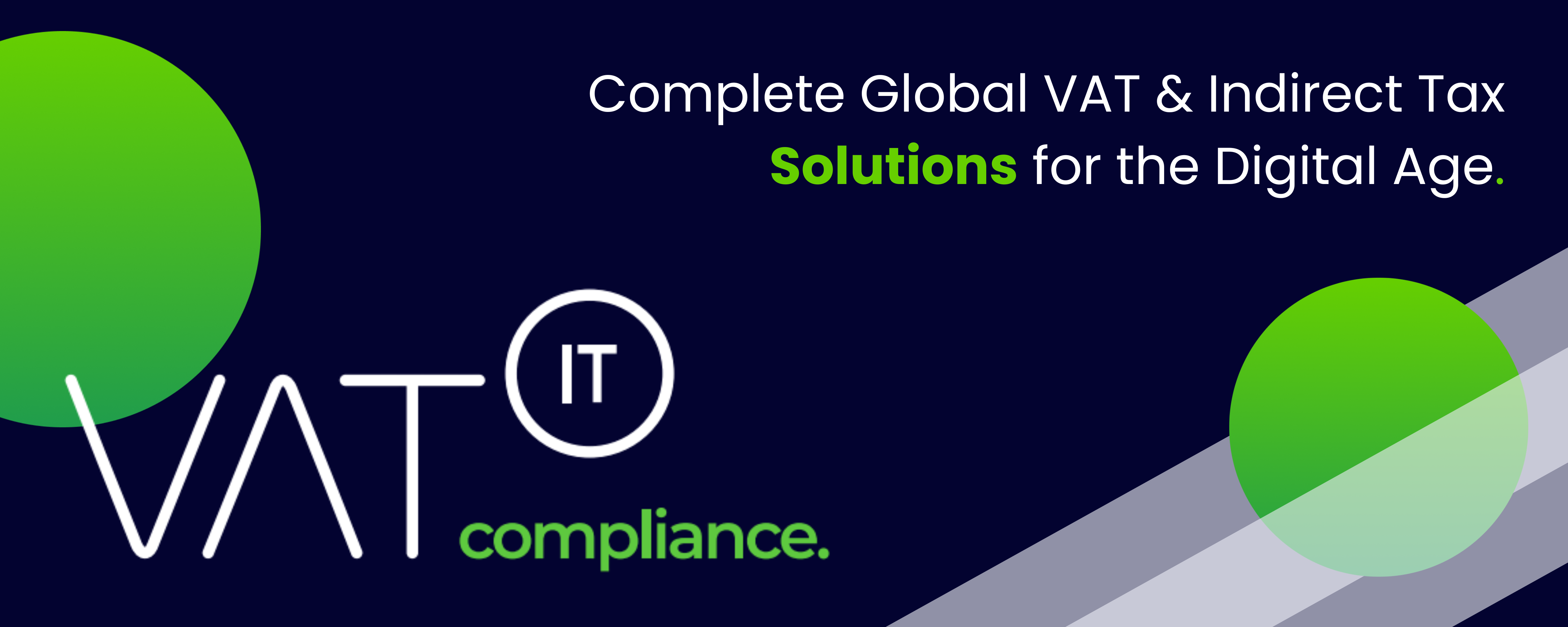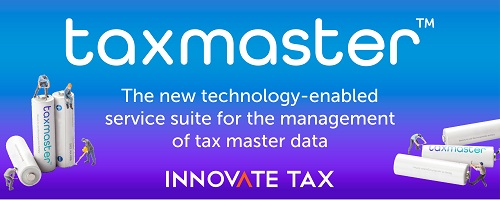(Unofficial translation)
Scope of the application for an individual interpretation
On June 27, 2023, your application of June 26, 2023 for an individual interpretation was received, which concerns the right to deduct input tax from the invoice issued by the bailiff . You supplemented it – in response to the request – in the letter of July 18, 2023 (date of receipt by the Authority on July 21, 2023).
The content of the proposal is as follows
Description of the future event
You are a limited liability company with the status of an active VAT payer. You intend to purchase 4 land properties (ownership/perpetual usufruct) which are the subject of a future bailiff auction conducted by an authorized body.
Below is a separate description of each property:
1) Property 1 (plot number 1, Land and Mortgage Register (…)) – according to the data contained in the land and mortgage register, the property has an area of 0.3376 ha, and its use is marked as “BI – Other Built-up Areas”. According to the Land and Mortgage Register, the owner of Real Estate 1 is the Mayor of the City (…), and a company with the status of an active VAT payer (hereinafter referred to as the “).
2) Real estate 2 (plot number 2, Land and Mortgage Register (…)) – according to the data contained in the land and mortgage register, the real estate has an area of 0.2672 ha, and the way of using it is marked as “BI – Other Built-up Areas”. According to the Land and Mortgage Register, the owner of Real Estate 2 is the Mayor of the City (…), and the Debtor is entered as the perpetual usufructuary and owner of a building constituting a separate property (5-storey office building from 1976).
3) Real estate 3 (plot number 3, KW (…)) – according to the data contained in the land and mortgage register, the real estate has an area of 0.4629 ha, and the way of using it is marked as “Ba – Tereny Przemysłowe”. According to the content of the land and mortgage register, the owner of Real Estate 3 is the Mayor of the City (…), and the Debtor is entered as the perpetual usufructuary. Property 3 is not developed in any way. The property in question is mostly asphalted or concreted and constitutes an internal road/parking lot.
4) Real estate 4 (plot number 4, Land and Mortgage Register (…)) – according to the data contained in the land and mortgage register, the real estate has an area of 0.0643 ha and its use is marked as “BI – Other Built-up Areas”. According to the Land and Mortgage Register, the owner of Real Estate 4 is the Mayor of the City (…), and the Debtor is entered as the perpetual usufructuary. According to the information indicated in the excerpt from the appraisal report prepared for the purposes of the auction, the Real Property is not developed.
All of the above the properties are located in an area where the local spatial development plan is not in force. In accordance with the Study of Conditions for Spatial Development Directions (…), approved by Resolution No. (…) of the City Council (…) of October 10, 2006, as amended. the property is located in the area marked with the symbol PU.20 – production and service areas (building height 20 m, development intensity index 1.5). January 28, 2013 for some plots belonging to the property under valuation and several others, with registration numbers: 4, 5, 6 from the precinct (…), 7, 8, 9, 10, 11, 12, 3, 13, 14 from the precinct (…), issued under the authority of the President (…), decision No. (…) on the development conditions for the investment consisting in the reconstruction and change of use of the existing warehouse and office buildings into an exhibition center with office buildings – services, along with the possible construction of a technical building and above-ground car parks (Decision on development conditions).
According to the content of the appraisal report, the valued plots constitute an organized economic entity and therefore they were valued jointly. Individual plots would be difficult to develop as some of them have an unfavorable shape (narrow shape), some have a small area and there are limited development possibilities on part of their area. For these reasons, their separate sale would be unjustified. Due to the above, i.e. the acquisition of the above-mentioned property by one valuation and one auction, the term “Property” used in the further part of the application refers to all the properties described above jointly.
You do not have detailed knowledge on how the Real Property is used by the Debtor, in particular you do not have information on the possible use of the Real Property for purposes of activities exempt from value added tax, as well as on the possible right of the Debtor to reduce the amount of tax due by the amount input tax on the purchase of Real Estate.
The information on the planned bailiff’s auction shows that the sale of the above-mentioned Real Estate (ownership right and perpetual usufruct right) will be subject to VAT at the rate of 23% and will not be exempt from VAT.
You have received information from the bailiff that the decision to tax the sale of the Real Estate with VAT was made by the bailiff on the basis of a written statement of the Debtor that the sale of the Real Estate should be subject to VAT at the rate of 23%.
In the case of a sale transaction by bailiff auction, pursuant to Art. 106c of the VAT Act, the court bailiff performing enforcement activities within the meaning of the Code of Civil Procedure issues an invoice documenting the delivery of the property, on which the relevant VAT will be shown. However, this invoice will be issued in the name and on behalf of the Debtor.
In the event that you purchase the above-mentioned real estate by bailiff auction, they will be used for your taxable activities.
Complementing and specifying a future event
Taxation of real estate sale transactions by the bailiff will not take place on the basis of the application of Art. 43 sec. 21 of the Act (Journal of Laws of 2022, item 931, as amended). The bailiff obtained information from the debtor that the debtor is a VAT payer and the transaction will be taxed at the 23% VAT rate
Question:
If the sale of the Property in question (ownership right and perpetual usufruct right) to you by way of a bailiff’s auction is recognized as a transaction taxed with VAT at the rate of 23%, not benefiting from any of the subject exemptions regulated in Art. 43 sec. 1 of the Act (due to the lack of fulfillment of the conditions for their application as determined by the bailiff) and the issuance by the bailiff of invoices for the sale of the Real Estate on behalf of and for the Debtor, will you be entitled to deduct input VAT resulting from invoices issued by the bailiff?
your position on the matter
If the sale of the Property in question (ownership right and perpetual usufruct right) to you by way of bailiff auction is recognized as a VAT-taxable transaction that does not benefit from any of the subject exemptions regulated in Art. 43 sec. 1 of the Act and issuing invoices by the bailiff in relation to the sale of the Real Estate on behalf of and for the Debtor, you will be entitled to deduct the input VAT resulting from the invoices issued by the bailiff.
Justification of the position `:
The sale of the Property in question (ownership rights and perpetual usufruct rights) will take place through a bailiff auction conducted by a court bailiff. The bailiff performing enforcement activities within the meaning of the provisions of the Code of Civil Procedure, in accordance with Art. 18 of the VAT Act, is a payer of tax on the delivery, made under the execution procedure, of goods owned by the debtor or held by him in violation of applicable regulations. The role of the payer is regulated in art. 8 of the Tax Ordinance and boils down to calculating and collecting the tax from the taxpayer and paying it to the tax authority in due time. Pursuant to Art. 106c of the VAT Act, invoices documenting the delivery of goods referred to in Art. 18, for which the debtor has a tax obligation,
Referring the above regulations to the facts in question, it should first be pointed out that the debtor within the meaning of the above-mentioned provisions will be the owner/perpetual usufructuary of the Real Property in question, therefore it is for him and on his behalf that the bailiff will issue an invoice documenting the delivery of the Real Property under bailiff enforcement, the recipient of which will be you – the buyer of the Real Property. At the same time, the bailiff will be required to collect VAT at the correct rate and pay it to the competent authority. At the same time, you emphasize that in the case of the sale of the Property in question by bailiff auction, there will be a paid delivery of goods between active VAT taxpayers. As a consequence, these events, as fulfilling the characteristics of Art. 5 of the VAT Act, will generally be subject to taxation.
You emphasize, following the description of the future event, that properties No. 3 and No. 4, which are the subject of the planned delivery, are not developed. There are no buildings, structures or their parts within the meaning of the Act of 7 July 1994 Construction Law (Journal of Laws 2021. 2351, i.e.), unlike real estate No. 1 and No. 2. Thus, for obvious reasons the reasons for applying the provisions of art. 43 sec. 1 points 10 and 10a of the VAT Act, regulating the exemption in the case of the supply of buildings, structures or parts thereof.
The exemption regulated in Art. 43 sec. 1 point 9 of the VAT Act, concerning the supply of undeveloped land other than construction land. Although the first of the conditions for its application is met – the properties are undeveloped, the second condition for the application of this provision is not met. According to Art. 2 point 33 of the VAT Act, construction areas are defined as land intended for development in accordance with the local spatial development plan, and in the absence of such a plan – in accordance with the decision on the conditions of development and land development referred to in the regulations on spatial planning and development. Referring to this future event, you indicate that the real estate described in the actual state as No. 3 and No. 4 being the subject of the future delivery, are located in areas designated for development in accordance with the local spatial development plan. As a result, their supply cannot benefit from the exemption regulated in Art. 43 sec. 1 point 9 of the VAT Act.
However, you do not have information on how the Property in question is used by the Debtor; in particular, you do not have information as to the possible use of the Real Estate only for the purposes of exempt activities. You are also unable to determine, based on the information in your possession, whether the Debtor was entitled to reduce the amount of tax due by the amount of input tax in connection with the purchase of the Real Estate/perpetual usufruct right. As a consequence, you cannot rule out or confirm the application of the exemption from Art. 43 sec. 1 point 2 of the VAT Act, in relation to the delivery of the Real Estate.
You are also unable to determine whether the exemption from Art. 43 sec. 1 point 10 of the VAT Act or exemption from art. 43 sec. 1 point 10a of the VAT Act.
Notwithstanding the foregoing, it should be noted that the Real Property will be sold by bailiff’s auction, which means that the debtor (owner/perpetual usufructuary) will still be the taxpayer in the case of a VAT-taxable delivery, and the bailiff – in accordance with the role of the payer – will be obliged to calculate and collect the tax from the taxpayer and pay it in due time to the tax authority. Therefore, the bailiff is the entity that assesses the existence of grounds for taxing the sale of plots with VAT or using statutory exemptions.
In accordance with the description of the future event presented above, the information on the planned bailiff auction shows that the sale of real estate will be subject to VAT at the rate of 23%; therefore will not use any of the above. redundancies. The lack of application of exemptions and the application of the VAT rate of 23% results from the arrangements made by the bailiff in the form of obtaining information from the Debtor on the need to apply the VAT rate of 23% for the sale of the Real Estate.
As a consequence, on invoices issued by the bailiff on behalf of and for the Debtor pursuant to Art. 18 of the VAT Act, the recipient of which will be the amount of tax due. If you win the auction, you will pay the invoice amount, including the amount of VAT indicated on it. After the possible purchase of the Real Estate (ownership right / right of perpetual usufruct), you will use it to perform taxable activities, and therefore you will be entitled to deduct the tax due by the amount of input tax indicated on the invoices in question, pursuant to art. 86 sec. 1 of the VAT Act. You indicate that none of the exclusions of the right to deduct provided for in Art. 88 of the Act; in particular, Art. 88 sec. 3a point 2 of the VAT Act, concerning transactions documented with an invoice that are not subject to taxation or are exempt from taxation. As it has already been indicated, the sale of real estate to you will basically constitute a supply of goods for consideration, subject to VAT at the rate of 23%.
Therefore, due to the fact that the purchase of the Real Estate takes place through the bailiff, who is here the entity responsible for the correct VAT taxation of the sale of the Real Estate, you are of the opinion that in the described future event, the deduction of VAT from the invoice issued by the bailiff who decided to application of the VAT rate of 23% may not be questioned by the tax authority in the future, which ensures tax security for you – the buyer of the real estate, who purchases the Real Estate through a bailiff’s auction.
You emphasize that such a goal, i.e. ensuring the security of trading for entities purchasing real estate through bailiff auctions, was the guiding principle of legislative changes, as a result of which the provision of Art. 43 sec. 1 point 21, according to which, if the documented actions of the bailiff did not lead, due to the inability to obtain the necessary information from the debtor, to confirm the fulfillment of the conditions for applying one of the exemptions described in Art. 43 sec. 1 point 2, 3 and 9-10a, it is assumed that the conditions for applying tax exemptions are not met.
It is worth recalling here an excerpt from the explanatory memorandum to the draft act of 4 July 2019 amending the act on tax on goods and services and certain other acts (i.e. Journal of Laws of 2019, item 1520), introducing the commented article 43 sec. 21. According to the justification: The consequence of the above changes will be that deliveries of goods made in such cases under the enforcement procedure will be taxed with VAT if the documented actions to confirm the exemption taken by the bailiff or the enforcement authority were due to the debtor ineffective. The proposed changes provide certainty both to tax remitters who are obliged to calculate, collect and pay VAT in the correct amount, but they will also provide protection to taxpayers who purchase goods under the execution procedure and who, in connection with such purchase, exercised the right to deduct the tax indicated in the invoice (the possibility of VAT was taken into account when making the acquisition under the enforcement procedure).
The cited fragment confirms your argumentation, as it directly indicates the intention of the legislator, which was, among others, to guarantee the safety of buyers of real estate through bailiff auctions, who should be entitled to deduct input VAT (assuming that the general conditions necessary for deduction are met – which is met for you).
Finally, the interpretation of the Director of the National Tax Information of June 30, 2022, reference number (0114-KDIP1-2.4012.185.2022.1.RST), which concerned the right to deduct VAT on a real estate purchase transaction by bailiff auction, in which the authority stated that: It should therefore be stated that in the case in question, both in the event that future sales activities to the Company by bailiff auction of the real estate in question (ownership rights and perpetual usufruct rights) will be transactions taxed with VAT, not benefiting from any of the subject exemptions regulated in Art. 43 sec. 1 of the VAT Act (due to the failure to meet the conditions for their application as determined by the bailiff) and in the event that future sales activities to the Company by bailiff auction of the real estate in question (ownership rights and perpetual usufruct rights) will be transactions taxed with VAT, not using none of the objective exemptions regulated in Art. 43 sec. 1 of the VAT Act (due to the application of Article 43(21) of the VAT Act, due to the inability to obtain the necessary information from the debtor – the owner/perpetual usufructuary of the property), the conditions referred to in Art. 86 sec. 1 of the VAT Act, which determines the right to reduce the tax due by the input tax, because the Company will be a registered, active VAT payer, and the Real Estate No. 1, 2 and 3 purchased by it will be used to perform activities subject to VAT.
Job evaluation
The position you presented in your application is correct.
Justification of individual interpretation
According to Art. 5 sec. 1 point 1 of the Act of 11 March 2004 on tax on goods and services (i.e. Journal of Laws of 2022, item 931, as amended) – hereinafter referred to as the “Act”:
Goods and services tax applies to paid delivery of goods and paid provision of services within the territory of the country.
Pursuant to Art. 2 point 6 of the Act by:
Whenever further provisions refer to goods, it means things and their parts, as well as all forms of energy.
Pursuant to Art. 7 sec. 1 of the Act by:
The delivery of goods referred to in art. 5 sec. 1 point 1, is understood as the transfer of the right to dispose of the goods as owner, (…).
In the light of the above regulations , buildings, structures and land meet the definition of goods under Art. 2 point 6 of the Act, and their sale constitutes a supply of goods referred to in Art. 7 sec. 1 of the Act, which activity is subject to tax on goods and services, pursuant to art. 5 sec. 1 point 1 of the Act.
Based on Article. 15 sec. 1 of the Act:
Taxpayers are legal persons, organizational units without legal personality and natural persons who independently carry out the economic activity referred to in par. 2, regardless of the purpose or result of such activity.
Business activity – in accordance with art. 15 sec. 2 acts:
It covers all activities of producers, traders or service providers, including entities extracting natural resources and farmers, as well as the activities of freelancers. Business activity includes, in particular, activities involving the use of goods or intangible assets on a continuous basis for profit purposes.
The provisions on tax on goods and services and the implementing regulations to this act provide for tax exemption for certain goods and services.
Based on Article. 43 sec. 1 point 9 of the Act:
The supply of undeveloped land other than construction land is exempt from tax.
In the light of Art. 2 point 33 of the Act:
Whenever further provisions refer to building areas, it means land intended for development in accordance with the local spatial development plan, and in the absence of such a plan – in accordance with the decision on the conditions of development and land development referred to in the provisions on planning and development spatial.
It follows from the above-mentioned provisions that the tax exemption referred to in Art. 43 sec. 1 point 9 of the Act covers the sale of undeveloped real estate (land) only when they do not constitute construction areas referred to in Art. 2 point 33 of the Act.
Moreover, pursuant to Art. 43 sec. 1 point 2 of the Act:
The supply of goods used solely for the purposes of tax-exempt activities shall be exempt from tax, if the purchaser, import or manufacture of these goods did not entitle the person making the supply to reduce the amount of tax due by the amount of input tax.
The scope and rules of exemption from tax on goods and services for the supply of built-up real estate are specified in Art. 43 sec. 1 point 10 and point 10a of the Act.
And so, pursuant to Art. 43 sec. 1 point 10 of the Act:
The supply of buildings, structures or parts thereof is exempt from tax, except when:
- a) the delivery is made as part of or before the first occupation,
- b)a period of less than 2 years elapsed between the first occupation and the delivery of the building, structure or part thereof.
It follows from the above regulation that the supply of buildings, structures or parts thereof is, in principle, exempt from VAT. The exception is the delivery within the first occupation or before it, and if the period between the first occupation and the delivery of the building, structure or parts thereof has elapsed for a period shorter than 2 years.
Therefore, in order to determine the taxation rules for the supply of buildings, structures or their parts, it is crucial to determine when the first occupation took place and what period has elapsed since then.
According to Art. 2 point 14 of the Act:
Whenever further provisions refer to the first occupation, this shall mean the commissioning of buildings, structures or parts thereof for use by the first purchaser or user, or commencement of use for own purposes of buildings, structures or parts thereof, after:
- a)construction or
- b)improvement, if the expenses incurred for improvement, within the meaning of the provisions on income tax, accounted for at least 30% of the initial value.
Pursuant to Art. 43 sec. 1 point 10a of the Act:
The supply of buildings, structures or parts thereof not covered by the exemption referred to in point 10 shall be exempt from tax, provided that:
- a)in relation to these objects, the party delivering them was not entitled to reduce the amount of tax due by the amount of input tax,
- b)the entity delivering them did not incur expenses for their improvement, in relation to which he had the right to reduce the amount of tax due by the amount of input tax, and if he incurred such expenses, they were lower than 30% of the initial value of these objects.
However, pursuant to Art. 18 of the Act:
Enforcement authorities specified in the Act of 17 June 1966 on enforcement proceedings in administration (Journal of Laws of 2022, item 479) and court bailiffs performing enforcement activities within the meaning of the Code of Civil Procedure are payers of tax on the supply in execution mode, goods owned or held by the debtor in breach of applicable law.
The definition of the payer is contained in Art. 8 of the Act of August 29, 1997 – Tax Ordinance (i.e. Journal of Laws of 2022, item 2651, as amended), according to which:
A payer is a natural person, legal person or organizational unit without legal personality, obliged under the provisions of the tax law to calculate and collect tax from the taxpayer and pay it to the tax authority in due time.
The provision of art. 18 of the Act introduces a special regulation under the provisions of the Act on tax on goods and services, when the tax due is collected and paid to the tax office by the payer, and not by the taxpayer. In this case, the payer acts as an intermediary between the taxpayer and the tax authority, transferring the taxpayer’s funds to the authority.
According to Art. 106b sec. 1 point 1 of the Act:
The taxpayer is obliged to issue an invoice documenting the sale, as well as the supply of goods and the provision of services referred to in art. 106a, point 2, made by him for another taxable person, value added tax or tax of a similar nature or for a non-taxable legal person;
Based on Article. 106b sec. 2 acts:
The taxpayer is not obliged to issue an invoice in respect of sales exempt from tax pursuant to Art. 43 sec. 1, art. 113 sec. 1 and 9 or regulations issued on the basis of Art. 82 sec. 3.
However, pursuant to Art. 106c of this Act:
Invoices documenting the delivery of goods referred to in Art. 18, in respect of which the debtor is subject to a tax obligation, are issued on behalf of and for the debtor:
1) enforcement authorities specified in the Act of 17 June 1966 on enforcement proceedings in administration;
2) court bailiffs performing enforcement activities within the meaning of the provisions of the Code of Civil Procedure.
In the light of Art. 106e sec. 1 point 20 of the Act:
In the case referred to in Art. 106c – the name and address of the enforcement authority or the name and surname of the bailiff and his address, and in the place specified for the taxpayer – name and surname or name of the debtor and his address.
It follows from the above-mentioned provisions that the bailiff performs the transaction on behalf of the taxpayer-debtor. The sale of goods owned by the debtor will be subject to value added tax if the debtor would be obliged to settle this tax, if the above transaction is not subject to this tax or would be exempt from it, the court bailiff will not be obliged to pay the tax .
Thus, the court bailiff is obliged to comply with the provisions of the Act on tax on goods and services and to take into account the circumstances determining its taxation with VAT when selling goods.
According to Art. 86 sec. 1 of the Act:
To the extent that the goods and services are used to perform taxable activities, the taxpayer referred to in art. 15, has the right to reduce the amount of tax due by the amount of input tax, subject to art. 114, art. 119 sec. 4, art. 120 sec. 17 and 19 and Art. 124.
Pursuant to Art. 86 sec. 2 point 1 of the Act:
The amount of input tax is: the sum of the tax amounts resulting from the invoices received by the taxpayer for: purchase of goods and services, payment in whole or in part before the purchase of goods or provision of services.
Therefore, the right to reduce the amount of tax due by the amount of input tax is granted when certain conditions are met, i.e. the deduction is made by a registered, active VAT payer and when the goods and services with which the tax was charged are used for performing taxable activities. The condition enabling the taxpayer to exercise the right to deduct the input tax is the connection between the purchases and the taxable activities performed, i.e. the consequence of which is the determination of the tax due (tax liability).
The rule presented above therefore excludes the possibility of reducing the amount of tax due by the amount of input tax related to services and goods that are not used for taxable activities at all, i.e. when they are used for activities exempt from VAT and not subject to VAT.
It should be emphasized that the legislator provided the taxpayer with the right to deduct input tax in whole or in part, provided that he meets both the positive conditions under Art. 86 sec. 1 of the Act and the absence of negative premises specified in Art. 88 of the Act. This provision specifies a list of exceptions that deprive the taxpayer of the right to reduce the amount of tax due by the amount of input tax.
One of such exceptions is defined in Art. 88 sec. 3a point 2 of the Act, according to which:
Invoices and customs documents do not constitute the basis for reducing the tax due and refunding the difference of tax or refund of input tax if the transaction documented by the invoice is not subject to taxation or is exempt from tax.
Therefore, the right to reduce the amount of tax due by the amount of input tax is granted when certain conditions are met, i.e. the deduction is made by the VAT payer and when the goods and services with which the tax was charged are used to perform taxable activities , i.e. those which result in the determination of the tax due (creation of a tax liability).
Your doubts in the presented future event concern the right to reduce the amount of tax due by the amount of input VAT resulting from invoices issued by the bailiff.
Referring to your doubts, it should be noted that the taxpayer has the right to reduce the amount of tax due by the amount of input tax when the positive conditions indicated in art. 86 sec. 1 of the Act, and there are no negative premises referred to in Art. 88 of this Act.
You have indicated that you have the status of an active VAT payer. As part of your business activity, you will purchase Real Estate No. 1, 2, 3 and 4 by bailiff auction. will be taxed and will not benefit from any of the exemptions provided for in Art. 43 sec. 1 of the Act. This invoice will be issued in the name and for the benefit of the Debtor. In addition, if you purchase the above-mentioned property by bailiff auction, they will be used to perform activities taxed by the Company.
It should therefore be concluded that in the analyzed case, future sales activities to the State by bailiffs’ auction of the real estate in question (ownership rights and perpetual usufruct rights) will be transactions taxed with VAT, not benefiting from any of the subject exemptions regulated in Art. 43 sec. 1 of the Act. Therefore, the conditions referred to in Art. 86 sec. 1 of the Act, which determines the right to reduce the tax due by the input tax, because the Company is a registered, active VAT payer, and the Real Estate No. 1, 2, 3 and 4 purchased by it will be used to perform activities subject to VAT.
Therefore, you will have the right to reduce the tax due by the amount of input VAT resulting from invoices issued by the bailiff.
Additional information
We point out that the Director of the National Tax Information is not entitled to issue an individual interpretation in the scope of determining the appropriate tax rate on goods and services for the delivery of goods.
However, pursuant to Art. 42b sec. 1 in conjunction with Art. 42a of the Act, you can apply to the Director of the National Tax Information with a separate application for the issuance of binding rate information (WIS), which is issued in the form of a decision for the purpose of taxation of the supply of goods, import of goods, intra-Community purchase of goods or provision of services. The WIS application may relate to the legal status that has been in force since July 1, 2020.
We would like to mention that as an element of the actual state of affairs, the Authority accepted the fact that the bailiff will issue to you an invoice documenting its delivery, in relation to the sale of the Real Estate, on which the relevant VAT will be shown.
It should be noted that the tax authority is closely bound to the description of the future event presented in the application. You bear the risk of possible incorrect or imprecise presentation of the description of the future event in the application. It should be emphasized that an individual interpretation produces tax law effects only if the actual state of the matter being the subject of the interpretation coincides with the description provided by you in the submitted application. Therefore, in the event of a change in any element of the description of the case presented in the application, the answer provided loses its validity.
Information on the scope of the decision
The interpretation applies to the future event that you have presented and the legal status that is in force on the date of the interpretation.
Instruction on the protective function of interpretation
- The protective function of individual interpretations is determined by the provisions of Art. 14k-14nb of the Act of August 29, 1997 – Tax Ordinance (Journal of Laws of 2022, item 2651, as amended). In order for the interpretation to be protective: Your situation must be consistent with the description of the future event and you must comply with the interpretation.
- According to Art. 14na § 1 of the Tax Ordinance :
the provisions of art. 14k-14n of the Tax Ordinance Act do not apply if the facts or future event being the subject of an individual interpretation is an element of activities that are the subject of a decision issued:
1) with the application of Art. 119a;
2) in connection with the abuse of the right referred to in Art. 5 sec. 5 of the Act of 11 March 2004 on tax on goods and services;
3) using measures limiting contractual benefits.
- According to Art. 14na § 2 of the Tax Ordinance:
the provisions of art. 14k-14n shall not apply if the tax advantage found in the decisions listed in § 1 is the result of compliance with established interpretation practice, general interpretation or tax explanations.
Instruction on the right to lodge a complaint against the interpretation
You have the right to challenge this individual interpretation to the Provincial Administrative Court in (…). The rules for appealing against individual interpretations are regulated by the Act of August 30, 2002, the Law on Proceedings before Administrative Courts – ie Journal Laws of 2022, item 259 as amended; hereinafter referred to as “PPSA”).
A complaint to the Court is lodged through the Director of the KIS (Article 54 § 1 PPSA). The complaint should be filed within thirty days from the date of delivery of the individual interpretation (Article 53 § 1 of the PPSA):
- in paper form, in two copies (original and copy) to the following address: Krajowa Informa- tion Skarbowa, ul. Warszawska 5, 43-300 Bielsko-Biała (Article 47 § 1 PPSA), or
- in the form of an electronic document, in one copy (without a copy), to the address of the Electronic Inbox of the National Treasury Information on the ePUAP platform: /KIS/SkrytkaESP (Article 47 § 3 and Article 54 § 1a PPSA).
A complaint against an individual interpretation may be based only on the allegation of violation of the provisions of the procedure, misinterpretation or incorrect assessment of the application of a provision of substantive law. The court is bound by the allegations of the complaint and the legal basis invoked (Article 57a PPSA).
Legal basis for issuing the interpretation
The legal basis for issuing this interpretation is Art. 13 § 2a and art. 14b § 1 of the Act of August 29, 1997 – Tax Ordinance (Journal of Laws of 2022, item 2651, as amended).
Source: gov.pl















